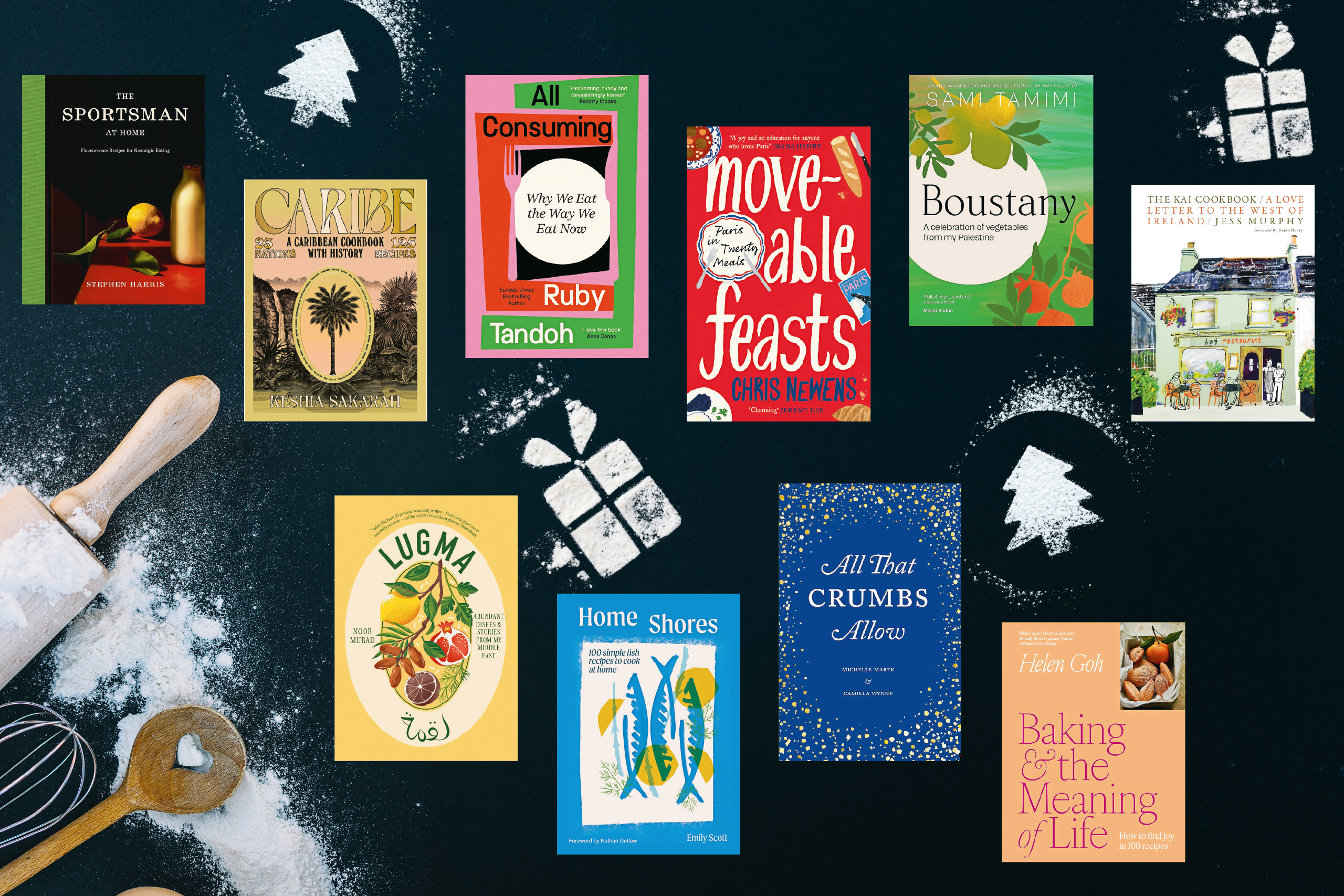At my restaurants – Mountain, Brat and Brat x Climpson’s Arch – almost everything begins with flame. We cook over coals and wood: oak, birch, sometimes fruit wood. Each brings its own character and its own heat. Cooking with fire requires attention and use of intuition – and it involves all the senses.
Whenever I do cook with flame I am reminded of home, of where I grew up, in Angelsey, North Wales, and of the landscapes that shaped how I think about food, from the sea to the mountains. Cooking over fire is universal, but it’s also deeply personal.
In September, I took 30 members of my teams to West Wales, where we cooked together at a weekend residency. We sourced ingredients locally: beetroot from growers nearby; lobsters, crabs, mussels and oysters straight off the boats; a fresh raw cow’s milk cheese from a local maker. Cooking in Wales felt like a homecoming. It was a pleasure to work with produce that was out of the ground in the morning and on the plate by the evening.
My first two Observer recipes are versions of dishes we cooked at that residency, and which have appeared on our restaurant menus in one form or another: grilled leeks with laverbread beurre blanc; and venison with charred beetroot and walnut salad.
Good cooking usually begins with a simple question, and one I have asked here: what can I leave out? I’m less interested in equipment and technique, and much more interested in using the best ingredients I can find, understanding them, letting them speak. I cook both of these recipes at home. They don’t require any specialist kit or long shopping lists. A grill or fire adds depth – as I said, almost everything we do begins with flame – but a hot frying pan and oven will do just as well.
Related articles:
Grilled venison salad with charred beets, sorrel and walnuts
Serves 2 as a main, or 4 as a starter
This recipe leans into an ethos: a few perfect ingredients, cooked simply but with intent, where fire, smoke and natural flavour do the work. Cook over wood or charcoal if you can – that smokiness is the key seasoning. Use wild venison from the shoulder or loin – lean, well-aged and deeply flavoured.
beetroots 3, medium, scrubbed but unpeeled
venison, loin or haunch steaks 300-400g
sea saltblack pepper
rapeseed or olive oil a splash
shallot 1, very finely sliced
young sorrel or watercress leaves 1 handful
bitter leaves (radicchio or endive) 1 handful
toasted walnuts 1 small handful, roughly crushed
pecorino or other hard cheese a few shavings to finish
sherry vinegar a few drops to finish
For the dressing:
red wine vinegar 2 tbsp
extra-virgin olive oil 4 tbsp
Dijon mustard 1 tsp
runny honey 1 tsp
To prepare the beetroots, build a bed of embers or heat a charcoal grill. Nestle the whole beets in the coals or cook over indirect heat. Roast gently, turning occasionally, until tender and sweet, about 45-60 minutes. Once cool enough, rub off the skins with a cloth and tear into chunks. The scorched skins protect the flesh, giving a deep caramelised sweetness that anchors the salad.
Season the venison generously with salt, pepper, and a light film of oil. Lay directly over fierce embers or a hot grill. Cook quickly – about 1½–2 minutes per side for loin, slightly longer for haunch – aiming for rare to medium-rare. Rest somewhere warm for 8-10 minutes before slicing thinly across the grain.
Whisk all the dressing ingredients until emulsified. Toss the warm beets and shallot in it to absorb the acidity. Fold through the sorrel and bitter leaves – the heat from the beetroots will just wilt them. Scatter over the walnuts for crunch.
Lay the sliced venison on top of the salad. Spoon over the resting juices – liquid gold. Drizzle with a few drops of sherry vinegar and more olive oil. Finish with pecorino shavings. Serve warm with grilled sourdough or flatbread to mop up the juices.
Grilled leeks with laverbread beurre blanc, roasted bread and capers
Serves 4, as a starter.

This dish captures the spirit of the Welsh landscape and Catalan fire cooking. There’s something satisfying about developing sweetness and depth from vegetables over an open flame. Leeks cooked in this way will always feature on my menus when they’re in season. The leeks are charred until their outer skins blacken and blister, creating a soft, buttery and tender core.
They’re dressed in a laverbread beurre blanc – rich, saline, and slightly tangy. It’s Welsh coastal tradition meets French technique. Roasted breadcrumbs and fried capers add crunch and brine, bringing everything into balance.
young leeks 6-8, trimmed but roots intact
olive oil for brushing and to finish
capers, brined 1 tbsp
rapeseed oil 1 tbsp
lemon zest to finish
dill a few sprigs, to finish
For the laverbread beurre blanc:
shallot 1, finely diced
dry white wine 100ml
dry cider 50ml
double cream 2 tbsp
salted butter 150g, cold, diced
laverbread (Welsh seaweed purée) 2 tbsp
lemon juice ½ of 1 fruit
sea salt and black pepper to season
Build a wood or charcoal fire and let it burn down to glowing embers. Lightly coat the leeks in olive oil and season with salt. Grill them directly over the embers, turning often, until the outer layers are blackened and the cores tender, about 12-15 minutes. Transfer to a tray, cover with a tea towel and let them steam in their skins for 5 minutes to soften the centres.
To make the laverbread beurre blanc, combine the shallot, white wine and cider in a small pan. Simmer until almost all the liquid has evaporated, leaving about 1 tbsp. Add the cream, then reduce the heat to low. Whisk in the cold butter, a few cubes at a time, until emulsified and glossy. Stir in the laverbread, a squeeze of lemon, and season gently. The sauce should be rich and slightly tangy.
Remove the blackened outer layers of the leeks to reveal the soft, smoky cores. Slice lengthwise if large and arrange on a warm serving dish.
Dry the capers on a piece of kitchen towel. Bring the rapeseed oil to a high heat in a pan and fry the capers for 30 seconds, allowing to crisp. Remove with a slotted spoon and transfer on to a piece of kitchen paper to dry off the oil and allow to cool. Spoon the warm laverbread beurre blanc generously over the leeks. Serve with crusty sourdough.
Tomos Parry is the executive chef, founder and co-owner of Brat, Mountain and Brat x Climpson’s Arch in London. He will be writing a monthy column for the Observer Magazine
Photographs by Gary Hamill



